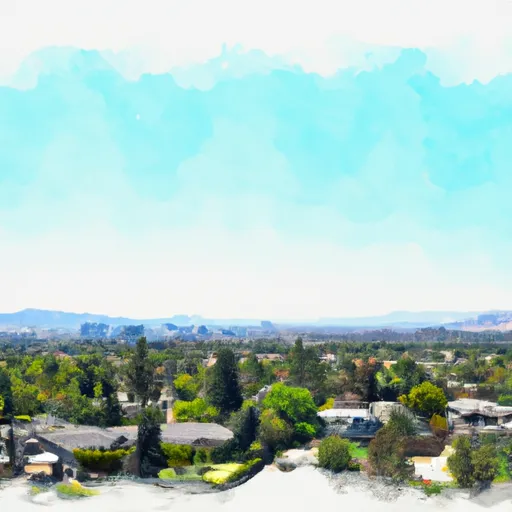-
 Snoflo Premium
Snoflo Premium
Get unlimited access to all our content
With no Ad interruptions! - Start Your Free Trial Login with existing account
Juniper-Hills
Eden Index
Climate
8.6
•
Recreation
5.6
•
Community
2.0
•
Safeguard
5.9/10

Juniper Hills, California is a small community located in the northern part of Los Angeles County. Situated in the San Gabriel Mountains, it offers a unique climate and diverse outdoor recreation opportunities. The area experiences a Mediterranean climate with hot, dry summers and mild, wet winters. Temperatures can range from the 70s to the 90s during summer months and drop to the 40s and 50s in winter. Precipitation occurs mostly from November to March, with an average annual rainfall of around 15 inches.
Hydrologically, Juniper Hills is characterized by several streams and springs that flow through the area. These contribute to the overall water supply in the region and support the growth of vegetation, including juniper trees, which give the community its name.
Outdoor enthusiasts will find plenty of recreational activities in Juniper Hills. The vast wilderness surrounding the area provides opportunities for hiking, mountain biking, and horseback riding. The nearby San Gabriel Mountains offer picturesque trails, including the popular Pacific Crest Trail. Wildlife viewing is also a highlight, with the possibility of spotting deer, coyotes, and various bird species. Additionally, the Angeles National Forest is easily accessible, providing further opportunities for camping, fishing, and picnicking. Juniper Hills presents an ideal destination for nature lovers seeking an escape from city life.
What is the Eden Index?
The Snoflo Eden Index serves as a comprehensive rating system for regions, evaluating their desirability through a holistic assessment of climate health, outdoor recreation opportunities, and natural disaster risk, acknowledging the profound impact of these factors on livability and well-being.
Climate Health Indicator (CHI): 8.6
Juniper-Hills receives approximately
175mm of rain per year,
with humidity levels near 72%
and air temperatures averaging around
17°C.
Juniper-Hills has a plant hardyness factor of
8, meaning
plants and agriculture in this region tend to thrive here all year round.
By considering the ideal temperature range, reliable water supplies, clean air, and stable seasonal rain or snowpacks, the Climate Health Indicator (CHI) underscores the significance of a healthy climate as the foundation for quality living.
A healthy climate is paramount for ensuring a high quality of life and livability in a region, fostering both physical well-being and environmental harmony. This can be characterized by ideal temperatures, reliable access to water supplies, clean air, and consistent seasonal rain or snowpacks.
Weather Forecast
Streamflow Conditions
Northern Mojave
Area Rivers
Northern Mojave
Snowpack Depths
Northern Mojave
Reservoir Storage Capacity
Northern Mojave
Groundwater Levels
Recreational Opportunity Index (ROI): 5.6
The Recreational Opportunity Index (ROI) recognizes the value of outdoor recreational options, such as parks, hiking trails, camping sites, and fishing spots, while acknowledging that climate plays a pivotal role in ensuring the comfort and consistency of these experiences.
Access to outdoor recreational opportunities, encompassing activities such as parks, hiking, camping, and fishing, is crucial for overall well-being, and the climate plays a pivotal role in enabling and enhancing these experiences, ensuring that individuals can engage in nature-based activities comfortably and consistently.
Camping Areas
| Campground | Campsites | Reservations | Toilets | Showers | Elevation |
|---|---|---|---|---|---|
| Bohelli Regional Park | None | 1,107 ft | |||
| Crystal Lake Rec Area | 191 | 5,689 ft | |||
| Monte Cristo | 19 | 3,589 ft | |||
| Chilao | 111 | 5,333 ft | |||
| Devore | 6 | 2,914 ft | |||
| Little Jimmy | 16 | 7,419 ft | |||
| Millard | 5 | 1,980 ft | |||
| Glenn Camp | 8 | 2,095 ft | |||
| Horse Flats | 25 | 5,639 ft | |||
| Coldbrook | 20 | 3,285 ft |
Nearby Fishing
Nearby Ski Areas
Catastrophe Safeguard Index (CSI):
The Catastrophe Safeguard Index (CSI) recognizes that natural disaster risk, encompassing floods, fires, hurricanes, and tornadoes, can drastically affect safety and the overall appeal of an area.
The level of natural disaster risk in a region significantly affects safety and the overall livability, with climate change amplifying these risks by potentially increasing the frequency and intensity of events like floods, fires, hurricanes, and tornadoes, thereby posing substantial challenges to community resilience and well-being.
Community Resilience Indicator (CRI): 2.0
The Community Resilience Indicator (CRI) recognizes that education, healthcare, and socioeconomics are crucial to the well-being of a region. The CRI acknowledges the profound impact of these elements on residents' overall quality of life. By evaluating educational resources, healthcare accessibility, and economic inclusivity, the index captures the essential aspects that contribute to a thriving community, fostering resident satisfaction, equity, and social cohesion.

